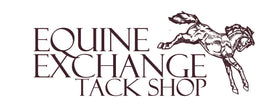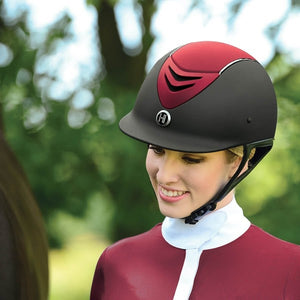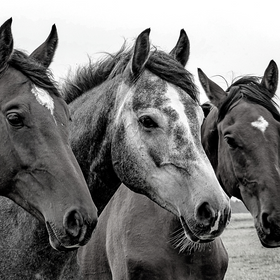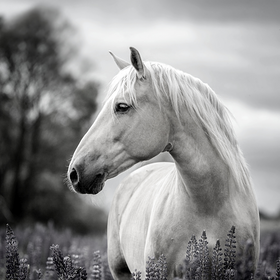
Cross-Country at a Glance
Cross-country jumping, sometimes called Horse Trials, tests the endurance, speed, and skill of a horse and rider over a set course that goes through forests and fields. 24-36 natural obstacles are used over a course up to two miles long. Cross-country jumping can be done as its own event or as one element of Eventing. It is a major test of endurance for the horse and rider, especially when combined as part of a three-day Event.
How is Cross-Country scored?
Horses and riders are scored on a combination of time and lack of penalties. The team with the fastest time and least number of penalties is the winner. Penalties are given for refusing fences, jumping out jumps out of order, jumping fences in the wrong direction, going over the allocated time, or not jumping a jump in the course. Riders are immediately eliminated in the event of a fall, though riders are allowed to dismount at any time (as long as it is not in front of a jump or as a result of a refusal). Horses falling on the course are also eliminated from the competition. An optimum time is set for the course and riders must complete the course within this time or receive a penalty.
Types of Jumps
Most of the obstacles on a cross-country course are designed to look natural. Natural obstacles can include logs, water, trees, ditches, and banks. Sometimes odd materials and decorations are added to test the bravery of the horse. All obstacles are flagged with the direction, red on the right side and white on the left. A black stripe on the red flag is used to indicate the obstacle is optional. All of the obstacles are numbered, with the color of the number indicating the level of difficulty. These colors are often used if the course is being used for multiple levels of competition. The terrain for each course is unique and the course designer will use these natural elements and lighting as they create the course.
Tack for Cross-Country
The tack needed for cross-country is very similar to the equipment used for show jumping. However, additional safety equipment is highly recommended as cross-country can be very dangerous. A close contact saddle and snaffle bridle are used by most competitors. You will sometimes see a Figure 8 or dropped noseband. Safety vests are HIGHLY recommended for this sport. ASTM certified helmets are required for all cross-country competitions and penalties are assigned if your helmet is not securely on your head or if the strap is unbuckled. Medical armbands are also required in lower-level cross-country courses. Falls happen often in cross-country due to the diversity of the courses and terrain and rider safety gear is key to reducing the risk of injury. Sport boots are recommended to protect the horse’s legs as they are going over the jumps and through the brush. Always check with your show’s regulations for specific rules related to approved or not approved tack.





